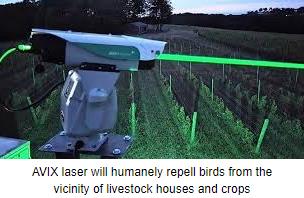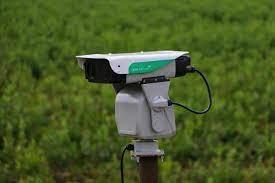 It is now an established reality that migratory waterfowl carry and disseminate highly pathogenic avian influenza virus. In addition there is circumstantial evidence that domestic non-migratory bird species may have become involved in the persistence and spread of the infection. This is based on the incident outbreaks in backyard farms that serve as sentinels. Weekly reports confirm the presence of H5N1 avian influenza virus during early spring in diverse states ranging from Oregon to Massachusetts and from the Dakotas to Texas and before waterfowl have commenced their northward migration.
It is now an established reality that migratory waterfowl carry and disseminate highly pathogenic avian influenza virus. In addition there is circumstantial evidence that domestic non-migratory bird species may have become involved in the persistence and spread of the infection. This is based on the incident outbreaks in backyard farms that serve as sentinels. Weekly reports confirm the presence of H5N1 avian influenza virus during early spring in diverse states ranging from Oregon to Massachusetts and from the Dakotas to Texas and before waterfowl have commenced their northward migration.
Preliminary epidemiologic studies by APHIS have identified proximity of wild birds as a significant risk factor in cases of avian influenza in commercial egg and turkey farms. Anecdotal and preliminary field evidence suggest that avian influenza virus can be transmitted over distances of up to a mile if entrained on dust with high winds. Aerogenous transmission of Newcastle disease virus was confirmed during the 1972 outbreaks in Essex in the U.K. and there is no reason to reject a parallel for avian influenza. If this is in fact valid, even the strictest biosecurity measures cannot absolutely eliminate the risk of introduction of avian influenza, especially for large egg complexes with houses operated with exhaust ventilation at displacement rates exceeding 1.5 million cfm.

It would seem appropriate therefore to prevent contact between wild birds and enclosed poultry. Air filters are impractical, cannons have proven to be inconsistently effective, installation of screens over lagoons is expensive and so a more efficient alternative is required to supplement intense structural and operational biosecurity.
Bird Control Group in the Netherlands has developed the AVIX Autonomic Laser Bird System that deters a wide range of bird species from congregating and roosting in favored areas providing feed and sanctuary. Developed originally for protection of fruit and crops, AVIX is now used as a bird deterrent for livestock and poultry facilities in addition to feed mills, barns and lagoons. The system emits a green laser beam that is perceived by birds as an aerial predator. The natural reaction of a flock is to take to the air as soon as the first bird recognizes the sweep of the beam.
The effectiveness of the system in deterring wild birds was demonstrated in controlled studies conducted by scientists at Wagenigen University in the Netherlands. Currently five units are being evaluated on turkey farms in Minnesota under the state Department of Agriculture under a ‘Livestock Protect’ grant. Some U.S. egg producers at locality risk are installing AVIX laser units on towers on their farms.
The system if correctly installed will reduce the gathering of birds within the range of the AVIX laser emitter by 80 to 95 percent. The system is effective, providing it is continually operational. The studies conducted in Holland by Dr. Armin Elbers, senior epidemiologist at Wageningen University and Research reported to the International Egg Commission that protection is provided over a range of 600 yards. Field trials demonstrated the absence of wild birds, principally migratory waterfowl, during the period of operation despite the presence of waterways in the vicinity of farms. Deactivating the laser invariably resulted in return of waterfowl.
From information provided by the U.S. Representative of the Bird Control Group, an installation costs approximately $15,000. The beam circulates through 180º and can be pre-programmed for optimal coverage depending on topography.
Based on the results of U.S. evaluation, a subsequent feasibility study will be prepared taking into account the risks and consequences of exposure to HPAI and the potential financial benefit from installation of the system.

It is emphasized that there is no single protective modality that is absolutely effective against introduction of HPAI into commercial flocks. The AVIX Autonomic Laser Bird Repellent System addresses a specific and highly significant risk factor. It is emphasized that both structural and operational biosecurity is required to prevent infection by obvious routes including personnel, vehicles, flock transfer and other fomites. The AVIX Autonomic System offers producers with a high level of biosecurity an additional means of protecting flocks against aerogenous infection.
Ultimately protection from endemic HPAI will require a combination of measures including repelling migratory waterfowl and domestic birds, high levels of structural and operational biosecurity and eventually effective immunization.
For further information on AVIX access the Bird Control Group website www.birdcontrolgroup.com or contact Craig Duhr (469) 345-9711 at <c.duhr@birdcontrolgroup.com>.